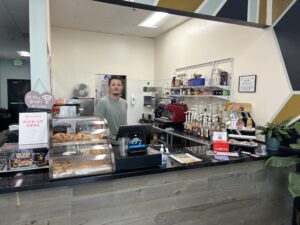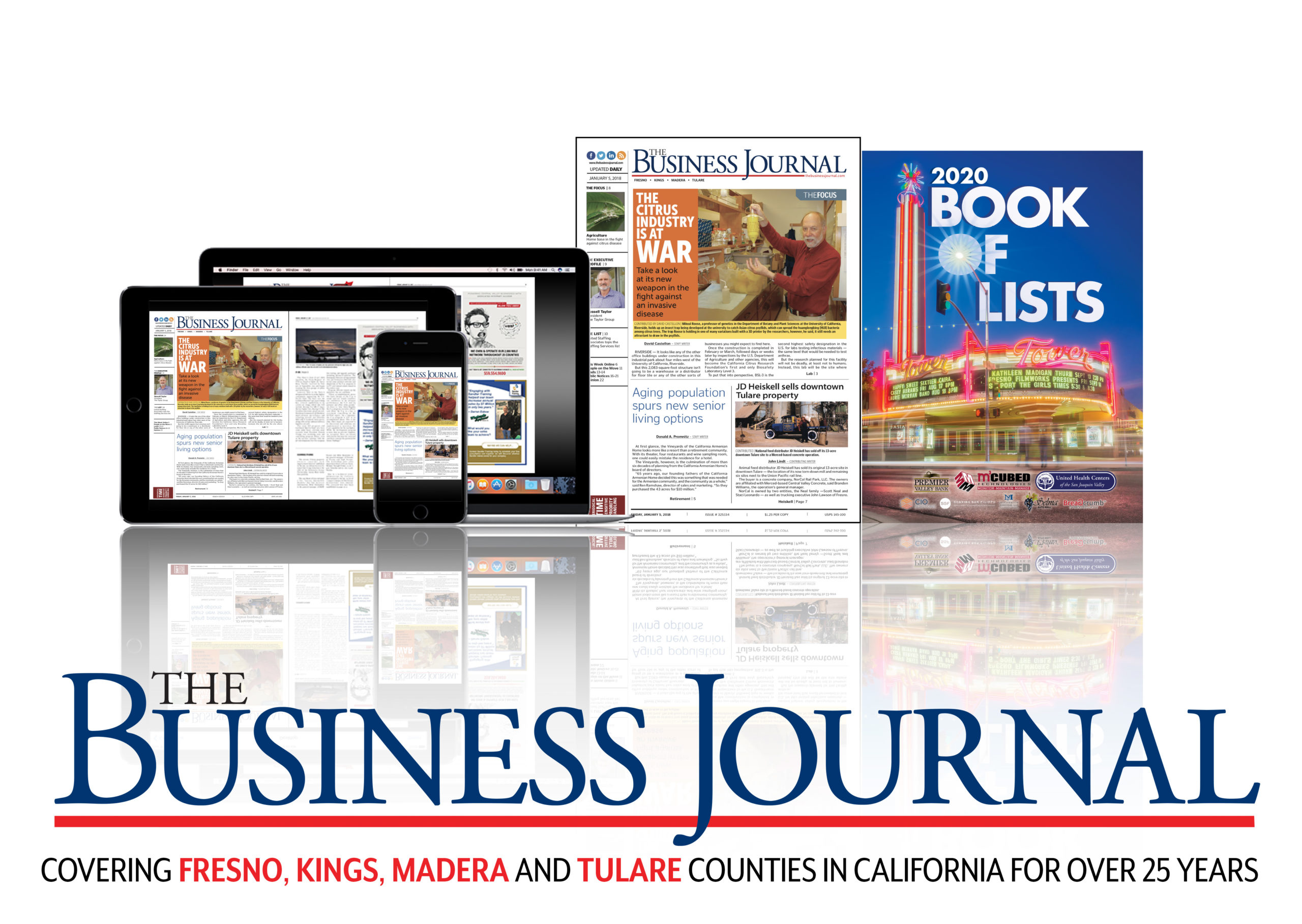
Photo illustration by Cecilia Lopez | A new study estimates the startup cost for a coffee shop at $100,000 to $350,000. Local owners found ways to cut those costs.
Written by Ben Hensley
California: land of avocado toast, mimosa Saturdays—and a booming coffee culture rivaling Wall Street’s Monday mornings.
For business owners eyeing the espresso market, the path to opening a coffee shop isn’t always smooth. From rising real estate costs to inflation on ingredients, launching a café requires more than just passion and caffeine.
A recent startup guide by Ohio-based Crimson Cup Coffee & Tea estimates startup costs for seated cafés range from $100,000 to $350,000. Drive-thru-only operations can cost up to $250,000. But these national averages don’t reflect California’s higher real estate and labor expenses.
Still, many Central Valley entrepreneurs are launching successful shops with creative cost-cutting strategies.
Starting small, staying smart
Alexander Osuna opened Monkey Dog Coffee in Clovis in June 2022 with a mix of personal funds and a loan from the U.S. Small Business Administration. His startup cost? Just under $100,000.
“That’s including all of the equipment, all the start-up supplies and all of the furniture,” Osuna said. “We were trying to do as much ourselves as possible.”

By handling much of the buildout with a friend, Osuna avoided major contracting costs, hiring only an electrician and plumber for specialized work. He also saved money by keeping the design minimal and skipping a kitchen hood installation due to zoning restrictions.
“We are not zoned for a hood, which cut out a potential café cost,” he said.
Osuna, his wife and brother ran the shop themselves the first year, hiring just one employee. That lean approach helped the business stay profitable.
“I think that saved us in a lot of ways,” he said. “There’s a lot of things that you don’t know that you don’t know.”
Unexpected expenses, including taxes and fees, forced the team to adjust on the fly. Menu strategy became essential to controlling costs.
Despite delays due to a loan misunderstanding, Osuna called the SBA experience “a good process.”
The value of guidance, microloans
Dawn Golik, district director of the SBA’s Fresno office, urges aspiring café owners to start by connecting with SBA resource partners.
“These are organizations that, at no charge to business owners, will help them start up and scale up their business,” Golik said.
Partners include SCORE (Service Corps of Retired Executives), the Small Business Development Center, the Veteran Outreach Center and the Women’s Entrepreneurship Center.
Golik added the SBA also works with microlenders offering loans of $50,000 or less—funding that can be the difference between opening a café or simply buying coffee from one.
“Not every small business needs a million dollars,” Golik said. “Sometimes businesses just need a little bit of capital to get going.”
Lessons from the gridiron
Former NFL linebacker Zack Follett entered the coffee world in 2012 with no prior business experience. He launched Kuppa Joy in Old Town Clovis after taking a weeklong course in Oregon and securing a lease.
“Once you sign that lease it’s game on,” Follett said. “Luckily, I had a dad who was somewhat of an entrepreneur and taught me a lot.”

His mother also encouraged him to attend the course, even paying the $2,500 tuition.
Follett estimated a new café in an existing building would cost about $290,000. He kept his investment to $130,000 by handling much of the remodeling himself.
The one misstep? Underestimating customer demand. He soon invested another $50,000 in equipment to meet the surge.
As the business grew, he expanded into kiosks—including one at Herndon and Cedar avenues, later adding locations in Madera and Visalia. The total cost to buy and convert the kiosk site was about $200,000. Today, he estimates that same build would cost more than $400,000.
Despite rising costs, Follett sees strong customer loyalty as a reason to remain optimistic.
Kuppa Joy has since grown from its Old Town Clovis roots, with five storefronts and three drive-through kiosks.
A growing market
Monkey Dog built its early following from nearby office workers — well before a Starbucks opened nearby in late 2024. That early base helped foster long-term loyalty.
Crimson Cup’s report backs that up. Scott Fullerton, head of the company’s 7 Steps to Success program, said the desire for locally owned cafés is growing.
“Specialty coffee now accounts for nearly 60% of all coffee consumed in the United States,” the report notes.
Still, California remains one of the toughest states to launch a business, and national cost averages don’t always reflect local realities.
But Osuna and Follett prove that with the right planning, resource use and strategic growth, independently owned coffee shops remain a viable — and rewarding—business venture.








